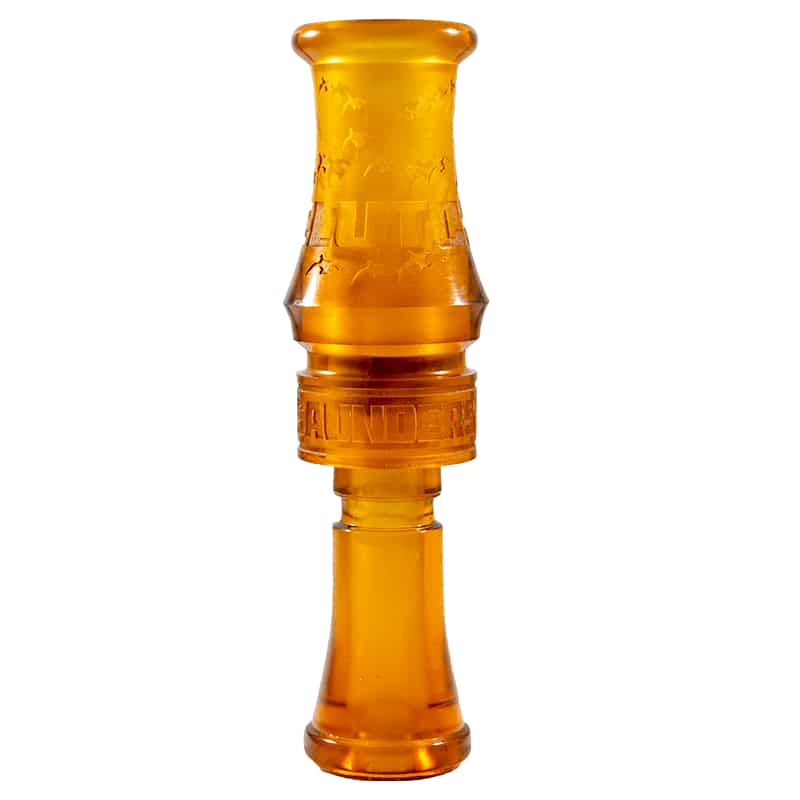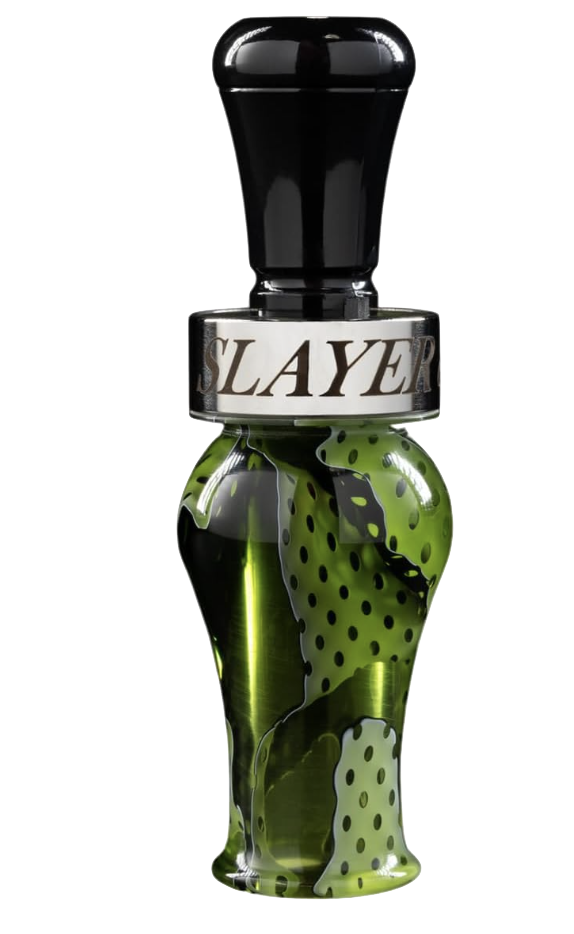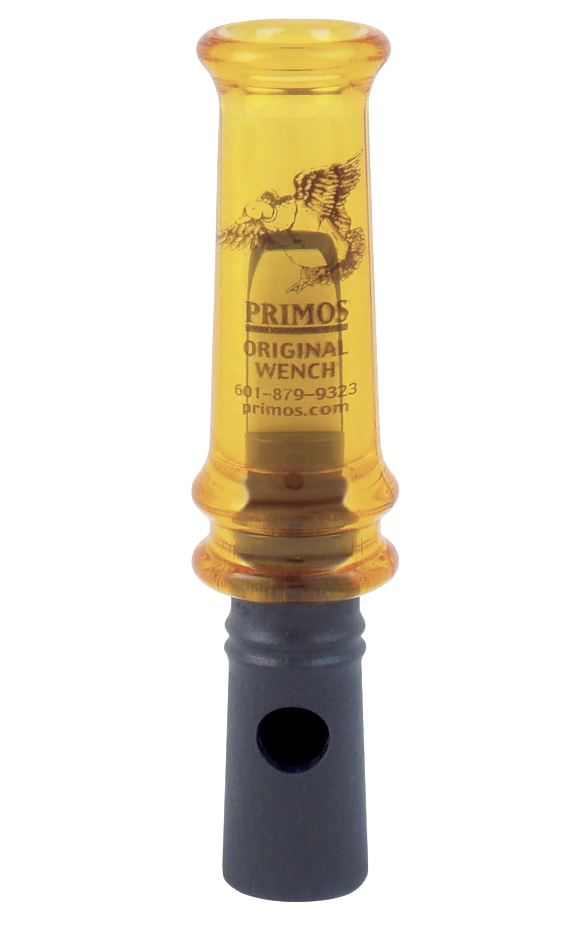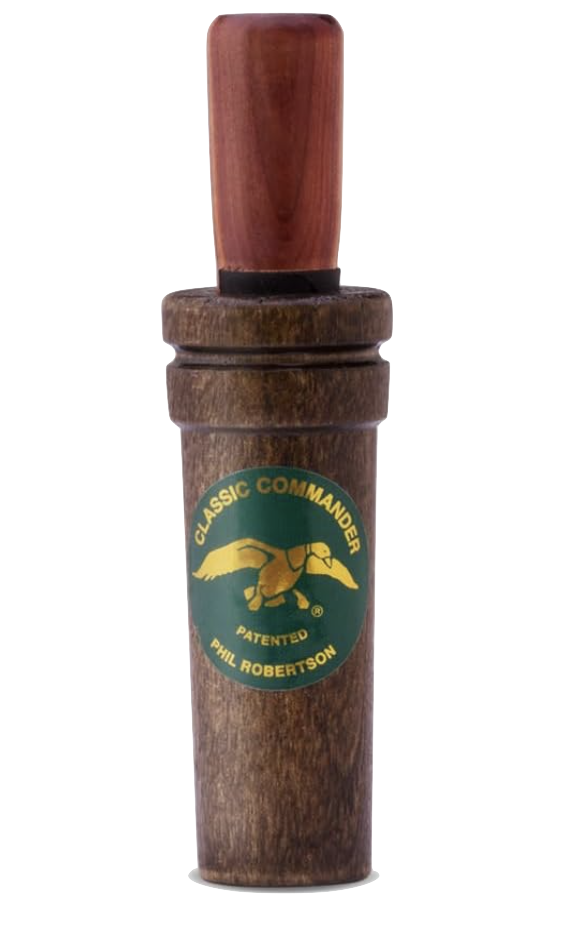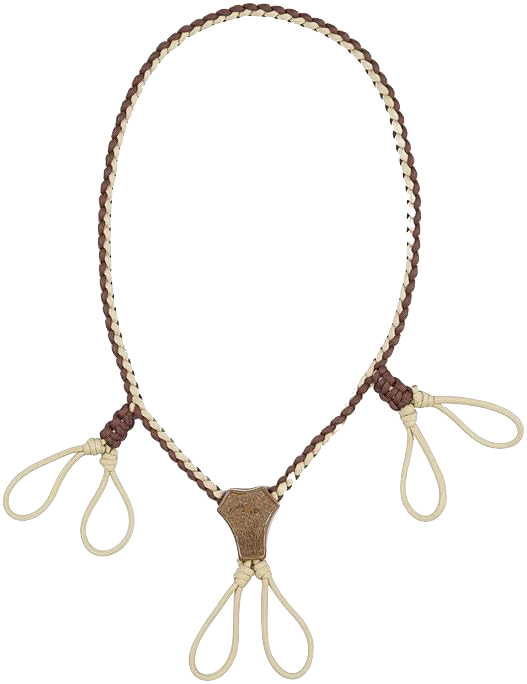We may earn revenue from the products available on this page and participate in affiliate programs. Learn more ›
Your first duck call should be affordable, easy to blow, and, most importantly, sound like a duck. That criteria seems pretty simple, but it's true. Beginner duck callers shouldn't be looking for a premium or custom call. Nor should they be trying to blow intricate cadences in the marsh. Novice callers should focus on mastering the simple quack and building their arsenal out from there.
The best way to accomplish that is to find a call that is easy to learn with. Usually, this means starting with some sort of double-reed. This style of call is more forgiving and allows for more user error. We have a range of options on the list below, mostly double-reeds, with a couple of single-reeds, and a whistle. We even included a good lanyard because where are you going to keep your call? Here are the best duck calls for beginners.
Best Overall: Bill Saunders’ The Clutch
Best Double Reed: Slayer Calls’ Ranger
Best Budget: Primos Original Wench
Best Whistle: Buck Gardner’s 6-in-1 Whistle
Best Lanyard: Rig ‘Em Right Pygmy Rattler Lanyard

How We Picked the Best Duck Calls for Beginners
I’ve hunted ducks for over four decades, and in that time, I’ve learned what makes a solid call. Each of the calls recommended on this list has, at one point or another, been on my lanyard. All of them are solid calls that are relatively easy to learn. This is the criteria novice waterfowl hunters should look for in their first call.
User Friendliness: Some duck calls are just inherently easier to blow than others. Single reeds can prove a challenge to some, while double reeds can pretty much work straight out of the box. I chose calls that are relatively easy to blow.
Durability: Theoretically, a duck call should be a lifetime investment. Is the call rugged enough to last season after season?
Sound Quality: A duck call has to sound like a real live duck. With practice, certainly, but the sound has to be inside that call in order for you to work it out. Does the call sound real?
Best Overall: Bill Saunders’ The Clutch
Key Features
Polycarbonate or Cocobolo construction
Single reed design
Four color options
Pros
User-friendly single reed that blows like a double
Durable
Affordable
Cons
Single reeds can be trickier to blow than double reeds
Bill Saunders is a champion caller and an even better call-maker. The Clutch is one of my favorites, and I blew it during the 2022/23 duck season here in Washington. There is some skill required to make this single reed sing, but it’s not an impossible challenge. The realistic tone combined with the strong volume makes this a great call to grab the attention of birds at a distance. I like the longer mouthpiece, which makes the call easier to operate, though the Clutch seems a little bit on the small side in my hands.
Best Double Reed: Slayer Calls’ Ranger
Key Features
Acrylic build
Double reed design
Multiple color options
Widened exhaust
Slightly extended tone board
Pros
Easy to use
Excellent service after-the-sale
Forgiving double reed
Rugged acrylic
Aesthetically pleasing
Cons
Expensive
I’ve carried the Ranger double reed call since it hit the streets late in 2022, and by and large, I am impressed. I’m no calling champion when it comes to playing a double reed; however, I don’t think anyone would tell me to stop if they heard me blow it.
Although expensive, the Ranger is a lifetime investment. It’s a good-looking call—mine is Blue Wing Mesh—made of tough acrylic. Most of all, the Ranger sounds good, thanks in part to the over-bored exhaust port and lengthened tone board, both of which work to help prevent lock-up and produce great volume.
Best Budget: Primos Original Wench
Key Features
Polycarbonate build
Double reed design
Reed relocation system
Tuning hole in barrel
Pros
Costs less than a box of shotshells
Easy-to-blow double reed
Polycarbonate material is durable
Cons
Poor aesthetics
Even as I write this, I am looking at my own personal Primos Wench call, and I can’t tell you how many mallard ducks were doped by this small conglomeration of graphite and Cocobolo, brass, and mylar. The $17 price tag is one of the most affordable calls you can buy. The double reed design sounds good and provides a relatively user-friendly starting platform for the beginner. Today’s Wench is a polycarbonate call, so it’s tough and easy to maintain. Speaking of which, for those prone to tear things apart without knowing what they’re doing, the Wench features a patented ‘reed relocation system’ of notches and posts that make it virtually impossible not to reassemble the call correctly. Graphite innards enhance the sound, while the tuning hole allows the user to raise or lower the pitch.
Best Whistle: Buck Gardner’s 6-in-1 Whistle
Key Features
Includes instructions for different calls
Durable materials
Seven different natural sounds
Pros
Easy to blow
Wide variety of sounds
Great volume when needed
Simple, lightweight, and extremely affordable
Cons
None
I can’t tell you how long my 6-in-1 has been hanging at the end of my working lanyard. It’s a fantastic, simple call with no moving parts and great volume. What do you get for your $7 with the 6-in-1? You get a drake mallard, pintail, widgeon, green-wing teal, wood duck squeal/whine, bobwhite quail, and for you turkey hunters, a red-tailed hawk scream. The included instructions make this a perfect call for beginners to learn on.
Duck Commander Classic Commander Double Reed
Key Features
All wood build
Double reed
Hand-tuned
Pros
Easy to blow
Excellent nasally, raspy sound
Long-lasting
Cons
The finish on the wood wears quickly
The Classic Commander double reed was my first-ever duck call. And I blew it for my first 14 years of hunting before I upgraded to a custom single reed. It is easy to blow, has great control, and can hit a wide range of volume. Most importantly, it sounds amazing. Last season, just for fun, I blew three different calls without my buddy knowing any of the models or brands. Purely judging on sound, he picked the Classic Commander over two other calls that were double the price. The low, raspy quack sounds exactly like a hen mallard. This is the call I recommend to any new hunter and one I still keep on my lanyard today. —Ryan Chelius
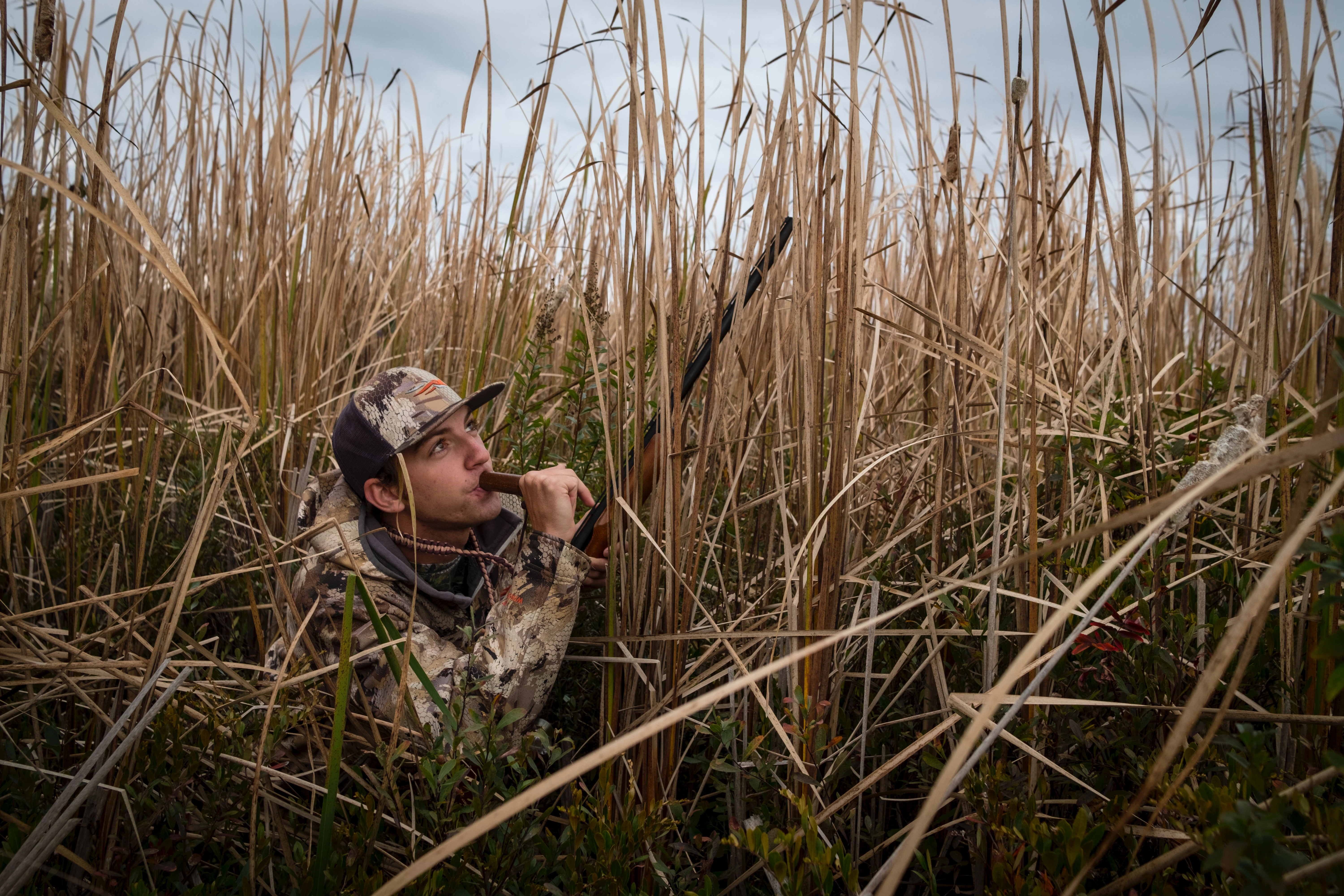
Zink PH-1 (Power Hen)
Key Features
Polycarbonate build
Single reed
Hand-tuned
Z-Cut tone channel
Pros
Easy-to-blow single reed
Modified tone channel eliminates reed stick
Affordable
Cons
Tough to tune
I have a PH-1 hanging on my working lanyard 24/7, and I am slowly teaching myself to use this single reed call. It takes a little time and practice, but I think most will be pleased with the call’s range, volume capabilities, and price. The Z-Cut tone channel basically eliminates any reed lock and produces loud realistic quacks. The polycarbonate build makes this a durable call and although it takes some practice, this is one of the easiest single reed calls to learn.
Best Lanyard: Rig ‘Em Right Pygmy Rattler Lanyard
Key Features
Holds up to three calls
Made of ultra-strong paracord
Two loops per call/six total
Color-matched design
Pros
Simple build
Strong paracord
Affordable
Cons
It can be uncomfortable; wear a high collar or hoodie
Headquartered in Newport, North Carolina, Rig ‘Em Right makes well-thought-out waterfowling gear that hunters can afford. I use their stuff because it works, and I have faith in it. The Pygmy Rattler call lanyard is just another example of Rig ‘Em Right’s commitment to providing the waterfowling community with good, affordable stuff. The double droppers ensure those new calls stay safe, secure, and around your neck.
Things to Consider Before Buying the Best Duck Calls for Beginners
There are a lot of things the novice waterfowler should consider when buying a duck call. It’s quality that you want, but at not too high a price because there’s an awfully good chance this won’t be your last duck call. Think of it like buying a new car, only a lot less expensive. Whether a car or a call, each comes with a variety of options. Some I’d consider necessary, while others are, just as the word implies, optional. Remember these considerations before buying the best duck calls for beginners.
Price/Budget
How much money are you willing and/or able to spend on a call? Again, duck calls can range from $20 to over $200, but just because a call sets you back a pair of Benjamins doesn’t mean it’s a good one.
Construction Material
Duck calls are crafted from any number of materials, including:
Wood: Mellow realistic sound; maintenance and care are required due to the tender nature of wood. Often custom and/or higher-end calls, thus a bit more costly.
Polycarbonate: Hard plastic material; rugged and durable. Unaffected by weather changes. Little maintenance is involved. Least expensive material and a great choice for beginners.
Acrylic: Extremely hard plastic-type material that produces sharp, clear, ringing sounds. Individually hand-made; higher end in terms of price and very durable.
Reeds
Ducks calls come in one of three reed designs—single, double, or triple. Single reeds are said to be the most versatile, but have a steeper learning curve than do the more user-friendly double reeds. I pack both on my lanyard, but prefer the double reed. As for the triple reeds, you don’t hear much of them, and I’d steer clear.
Skill Level
How much time and effort are you willing to invest into learning how to blow that duck call the proper way? To repeat, single reeds are versatile but a bit more challenging to master than double reeds; however, practice is a common denominator with both.
FAQs
Q: What is the easiest duck call to blow?
With some practice, a good double reed duck call would probably get the beginner started down the path the quickest and easiest; however, the best callers practice, practice, and practice some more.
Q: How long does it take to learn to use a duck call?
That really depends on how much time you’re willing to put into learning the art of duck calling. If you blow a call eight times during duck season and don’t touch it for 11 months, it’s going to take a while. Fortunately, there’s an almost endless list of “how-to” aids available today for those wanting to learn the ropes.
Q: Why are acrylic duck calls better?
Not better; just different. A very hard material, acrylic makes for a durable call, with a sharp, clear sound and the ability to produce a ton of volume; however, there’s absolutely nothing wrong with either wood or polycarbonate calls.
Q: What is the most popular duck call?
That’s a tough one because every duck hunter, eventually, is going to have his or her favorite call. If I were pressed to answer this question, I’d have to say a moderately priced polycarbonate double reed is the call you’re going to see most often on lanyards afield.
Best Duck Calls for Beginners: Final Thoughts
Best Overall: Bill Saunders’ The Clutch
Best Double Reed: Slayer Calls’ Ranger
Best Budget: Primos Original Wench
Best Whistle: Buck Gardner’s 6-in-1 Whistle
Best Lanyard: Rig ‘Em Right Pygmy Rattler Lanyard
Choosing your first duck call is a lot like buying your first vehicle. There’s a lot going on with that decision. Eventually, though, the choice boils down to selecting the call you think works best for your abilities, your soon-to-be calling style, your requirements for the places you hunt, and, certainly, your budget.
Why Trust Us
For more than 125 years, Field & Stream has been providing readers with honest and authentic coverage of outdoor gear. Our writers and editors eat, sleep, and breathe the outdoors, and that passion comes through in our product reviews. You can count on F&S to keep you up to date on the best new gear. And when we write about a product—whether it’s a bass lure or a backpack—we cover the good and the bad, so you know exactly what to expect before you decide to make a purchase.


